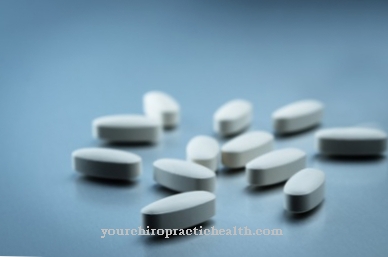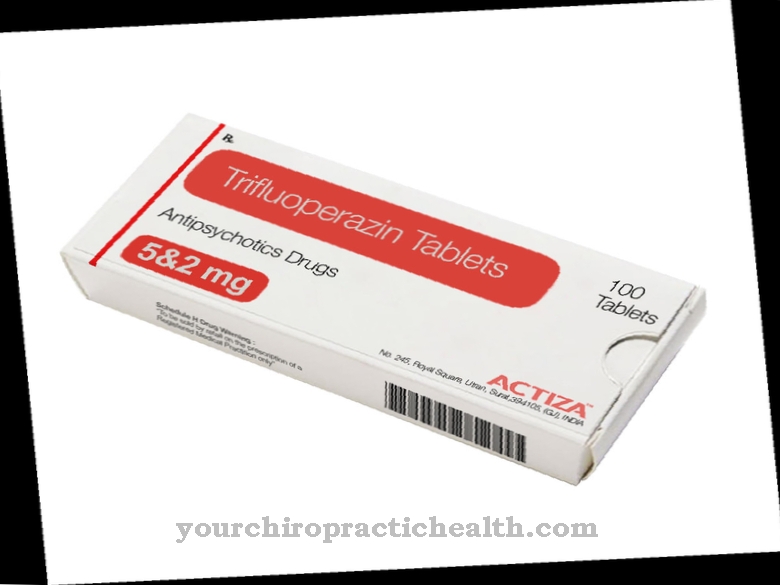Fibrates are carboxylic acids and count among the organic compounds. Various representatives such as clofibrate, gemfibrozil and etofibrate are known on the market. Fibrates bind to certain receptors in cell organelles and thus cause a reduction in blood lipid levels. Therefore, they are used to treat lipid disorders such as high cholesterol or triglyceride levels. Fibrates should not be prescribed for known liver diseases. The drug can cause side effects such as nausea, gas, vomiting, abdominal pain, and headache.
What are fibrates?
Fibrates and fibric acids belong to the group of carboxylic acids. These acids carry at least one carboxy group and belong to the chemical class of organic compounds. This means that their molecular compounds contain water and carbon.
Fibrates are marketed under various trade names. Representatives of this group include fenofibrate, clofibrate, bezafibrate, etofibrate and gemfibrozil.
Pharmacological effect on the body and organs
Fibric acid, fibrates and their derivatives accelerate the breakdown of fatty acids in the peroxisome. Peroxisomes are cell organelles found in eukaryotes. They are surrounded by a cell membrane and are among the detoxification apparatus in the human organism.
Fibrates bind to the so-called peroxisome proliferator-activated receptors. These receptors are called PPARs for short. They lie in the cells and can be activated by both physiological and pharmacological ligands. They then serve as a transcription factor and regulate the expression of various genes.
When fibrates bind to the PPARs, the receptor is dimensioned and then bound to deoxyribonucleic acid, or DNA for short. As a result, there is an increased breakdown of LDL cholesterol.
This can reduce the LDL level, the “bad” cholesterol level, by ten to twenty percent. At the same time, this promotes an increase in “good” cholesterol, or HDL for short, by five to ten percent. In addition, the triglyceride level can be lowered by twenty to forty percent.
At the same time, fibrate promotes the secretion of two enzymes. As a result, more cholesterol is secreted into the bile.This results in a slightly increased risk of developing gallstones containing cholestrol.
Medical application & use for treatment & prevention
Fibrates are used in medicine to treat excessively high blood lipid levels. Blood lipids are different lipids in the blood. In addition to cholesterol, these include triglycerides and fat-soluble vitamins. Fibrates are used to treat various disorders of lipid levels, while the so-called statins are almost exclusively used to treat hypercholesterolemia.
In addition to disorders of the blood lipid levels, the so-called hypertriglyceridemia is a disease that is treated with fibrates. The main goal of fibrate treatment is prevention of atherosclerosis. Atherosclerosis is a calcification of the blood vessels that can lead to fatal secondary diseases such as a stroke or a heart attack.
Contraindications for these drugs include liver disease, gallbladder disease and known skin sensitivity to light. Furthermore, dialysis patients and patients who are allergic to fibric acid must not be treated with the drug.
The intake and dosage of the drug should be individually tailored to the patient and the severity of the disease. Fibrates are usually not given as monotherapy. Increased blood lipid levels can also be positively influenced by adequate exercise and nutritional interventions. Thus, the drug is usually part of a multi-column therapy.
Pregnant and breastfeeding women should definitely consult their doctor before use. Regarding the dosage in children, there are still no meaningful figures.
Fibrates usually have to be administered over a longer period of time. Patients should take the medication regularly and act as directed by their treating physician. If you suspect that the dosage is too weak or too strong, the doctor should be contacted immediately. Furthermore, it is necessary to regularly check the blood lipid values in order to check the effectiveness of the therapy and to modify it if necessary.
Risks & side effects
Taking fibrates can lead to risks and side effects. However, when used correctly, most of the listed side effects are temporary. Stopping the medication is not always absolutely necessary if undesirable side effects occur and should never be done on your own but always in consultation with the treating doctor.
Common negative effects include abdominal pain, gas, constipation, loss of appetite, nausea, dizziness, rash, headache, fatigue, diarrhea, and dyspepsia. The latter is characterized by a digestive disorder in the upper abdomen. It is characterized by malaise, a burning stomach and an early feeling of satiety.
Fibrates can rarely lead to muscle diseases. In individual cases, the ingestion can lead to liver dysfunction. So-called rhabdomyolysis can occur very rarely. This leads to a life-threatening dissolution of the striated skeletal muscles. Symptoms of this disease include fever, vomiting, muscle weakness, muscle pain and acute kidney failure.
As mentioned in the previous paragraph, fibrates can increase the risk of developing gallstones containing cholesterol. Interactions with other drugs such as anti-diabetic drugs or anticoagulants are possible. Therefore, when setting with the drug, it is essential to ask about the use of other drugs.



























